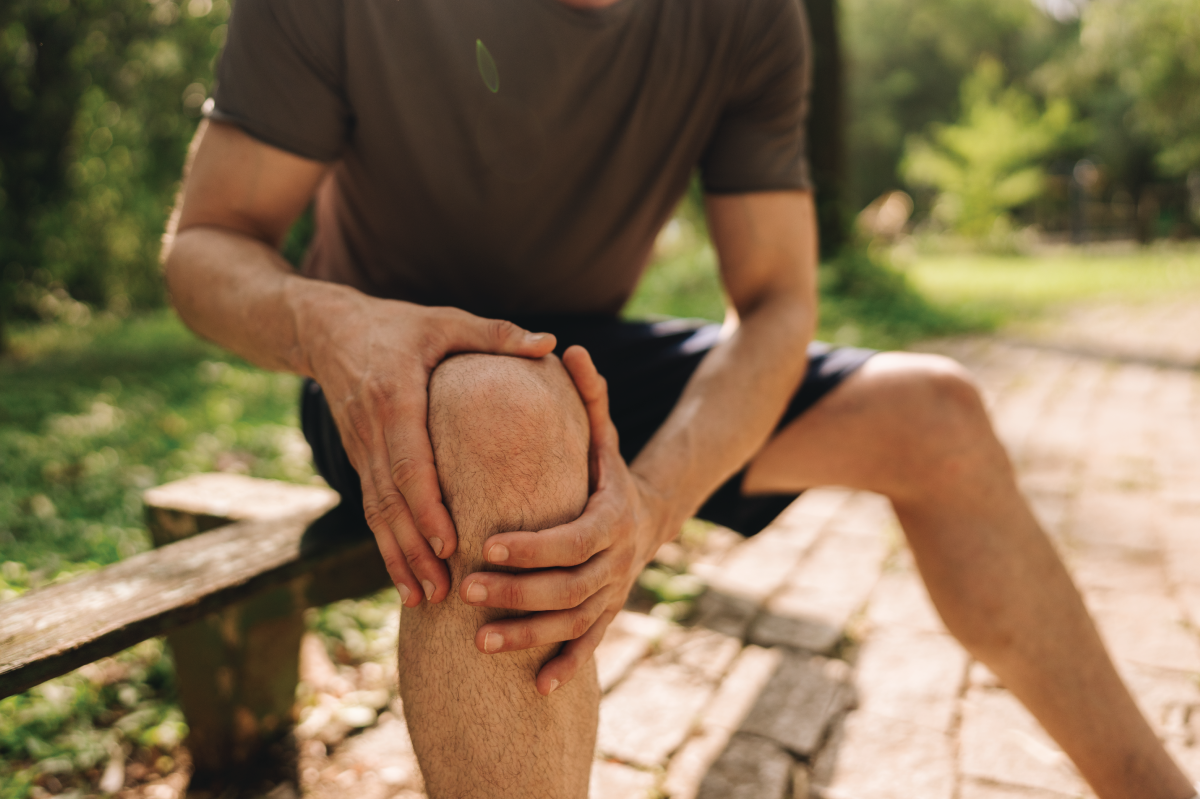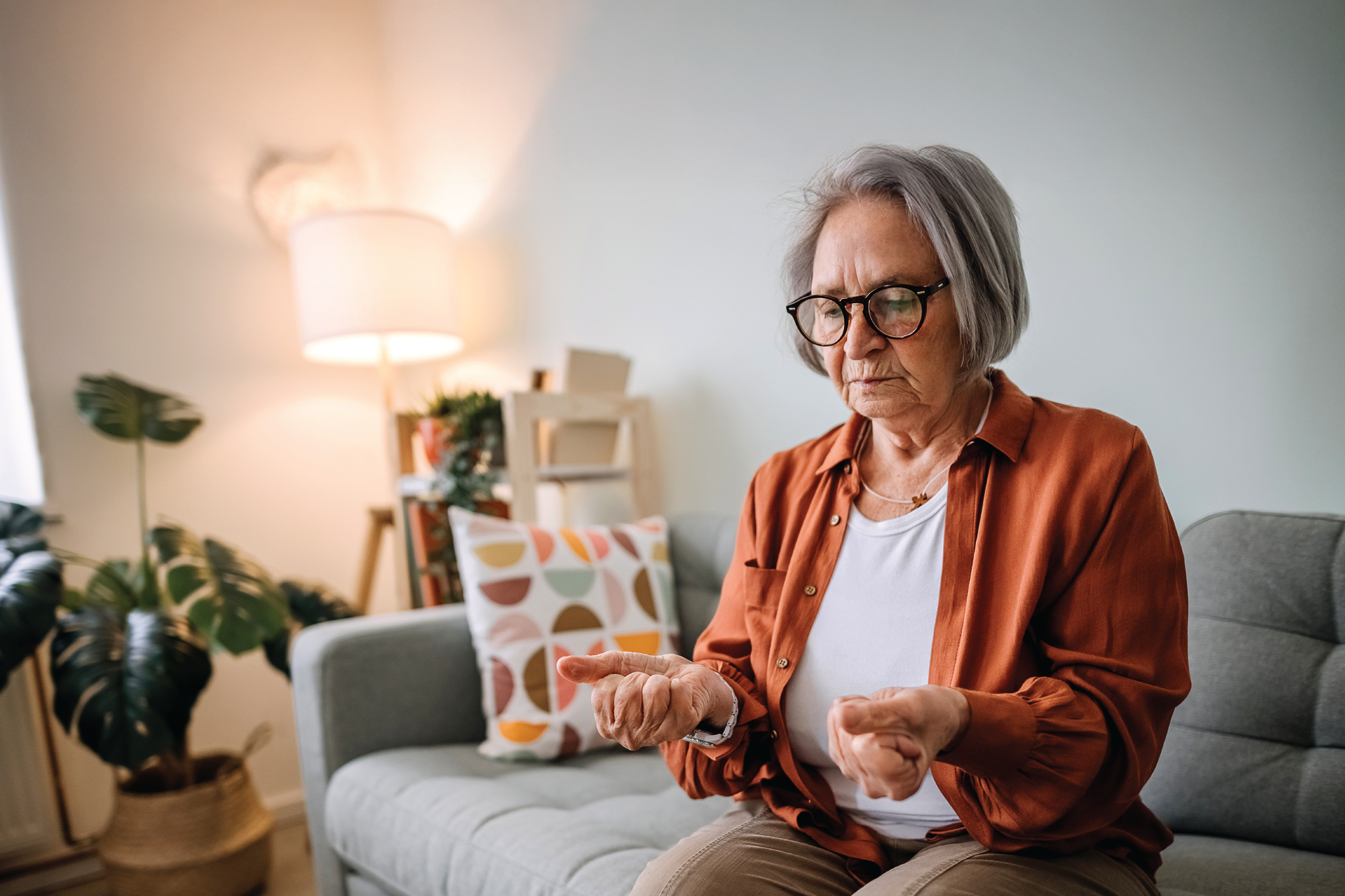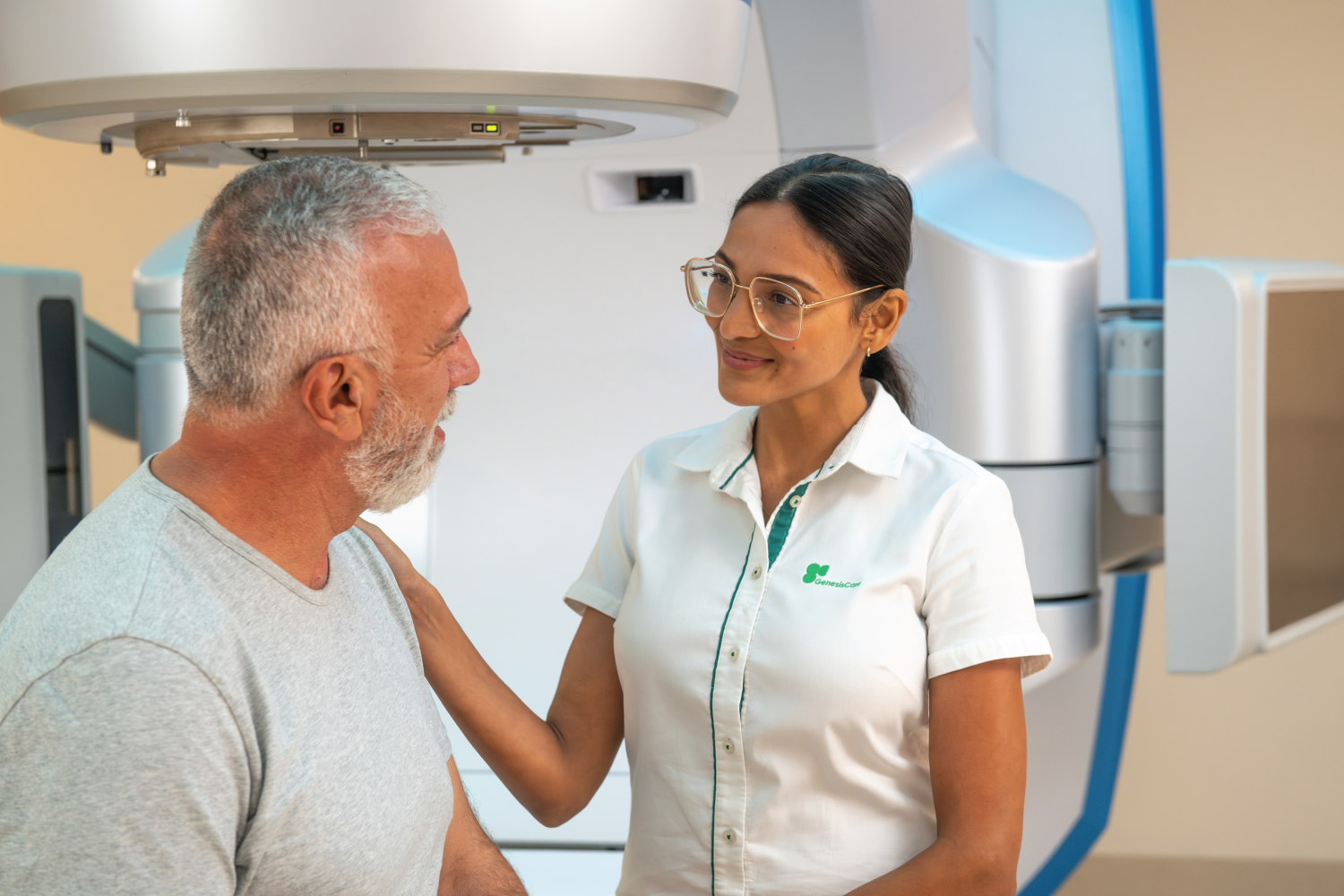Review date: November 2025
- Patients
- Benign disease services
- Osteoarthritis
What is osteoarthritis?
What is osteoarthritis?
Osteoarthritis can significantly impact quality of life, limiting mobility and causing persistent discomfort.
Osteoarthritis is a degenerative joint disease that occurs when the protective cartilage that cushions the ends of the bones gradually wears away. This leads to joint pain, swelling, stiffness, and reduced mobility in the affected joints.1
Osteoarthritis can affect any joint in the body, but it most commonly impacts the knees, hips, hands, spine. Less frequently, it can involve the shoulders and feet.1
Key risk factors for developing osteoarthritis include older age, being female, having a family history (genetic predisposition), carrying excess body weight (obesity), and leading a sedentary lifestyle.2
··
Symptoms of osteoarthritis
Osteoarthritis symptoms often develop slowly and worsen over time. They may vary depending on the joint affected, but commonly include:3
- Joint pain, especially during or after movement
- Stiffness, particularly in the morning or after inactivity
- Swelling around the joint
- Reduced flexibility or difficulty moving the joint through its full range
- Tenderness when pressing on or around the joint
Find out more
Speak to a team member or make an enquiry about GenesisCare's services
Diagnosis
Diagnosis

If you are experiencing joint pain or stiffness, your doctor may assess whether osteoarthritis is the cause. This usually involves a physical examination and discussion of your medical history.
Tests are not always needed to diagnose OA; however, you may be referred for tests such as:4
- X-Ray: To look for signs of osteoarthritis, such as joint space narrowing, bone spurs, or changes in bone shape
- Blood tests: To rule out other types of arthritis, such as rheumatoid arthritis
- MRI scans: In the instance that more detailed images of soft tissue (like cartilage or ligaments) are needed
Treatment options
Treatment options
Low-dose radiation therapy (LDRT) for osteoarthritis
While traditional treatments like medications, physical therapy and surgery remain as options, LDRT is a non-invasive option for patients seeking pain relief when traditional treatments are no longer useful and are not suitable for surgery.5
LDRT is a non-surgical treatment option that may help relieve pain, reduce stiffness, and improve movement in people with osteoarthritis.
Although radiation therapy is best known for treating cancer, research has shown that very low doses of radiation can have anti-inflammatory effects—making it a promising option for managing joint pain caused by osteoarthritis.6-9
LDRT uses low doses of high energy x-ray beams, delivered from a machine called a linear accelerator (linac), to target the affected joint from outside the body. The linac delivers a controlled dose of radiation to a precisely targeted area of the body, aiming for an anti-inflammatory effect on joints affected by osteoarthritis.

Our understanding of osteoarthritis has changed — it is no longer viewed as simply 'wear and tear'. Research now highlights the role of inflammation and the immune system in joint changes, promoting the breakdown of cartilage. Activated immune cells within our joints release pro-inflammatory factors that drive cartilage and bone breakdown.
LDRT has shown promise in down regulating the immune response in the affected joint/s modifying the disease process.5-8
- It reduces inflammation, which may ease pain and swelling
- It may slow the breakdown of cartilage by lowering the activity of certain immune cells
- Over time, this may help improve joint function and delay the need for more invasive treatments, such as surgery
Before your treatment begins, you will have an initial consultation with a radiation oncologist. During this appointment, the doctor will:
- Review your medical history
- Discuss your general health
- Explain your treatment options
- Talk through the treatment process
- Outline any potential side effects of radiation therapy10
At the end of your appointment, a simulation scan will be arranged. This will help your treatment team plan your therapy and ensure it targets the correct area with precision.
Once the scan is complete it may take some time for your radiation therapy planning team to design your treatment.
When treatment begins you will come in for appointments, usually once a day from Monday to Friday. Each session takes around 15 minutes, although the exact number and length of treatments will be confirmed by your radiation oncologist.
During each visit, radiation therapists will position your body, so it matches the setup used in the simulation scan. This ensures that the radiation is delivered safely and accurately to the treatment area.11,12
Like any medical treatment, radiation therapy can be associated with side effects.11 Your radiation oncologist will discuss potential side effects you may experience prior to commencing treatment.
If you have any questions or concerns about side effects, please talk to a member of your care team.
··
Is LDRT a suitable option for me?
LDRT may be a treatment option for you however prior to scheduling an initial consultation with a doctor (called a Radiation Oncologist), you will need the following:
- A recent referral from your GP.
- A copy of a recent x-ray confirming that you have a Kellgren–Lawrence score of 1-3. Your GP can refer you for the x-ray.
Make an enquiry
Find out more about GenesisCare's treatment options for benign conditions
Content reviewed by

- Australian Institute of Health and Welfare. (2024). Osteoarthritis. Retrieved October 2025, from https://www.aihw.gov.au/reports/chronic-musculoskeletal-conditions/osteoarthritis
- National Institute for Health and Care Excellence. (2022, October 19). Osteoarthritis in over 16s: Diagnosis and management (NICE guideline NG226). https://www.nice.org.uk/guidance/ng226
- healthdirect. (2024, April). Osteoarthritis (OA). Retrieved October 2025, from https://www.healthdirect.gov.au/osteoarthritis
- Arthritis Australia. (2024, April). Osteoarthritis. Retrieved October 2025, from https://arthritisaustralia.com.au/types-of-arthritis/osteoarthritis/
- Hoveidaei, A., Karimi, M., Salmannezhad, A., Yasaman, T., Taghavi, S. P., & Hoveidaei, A. H. (2025). Low-dose radiation therapy (LDRT) in managing osteoarthritis: A comprehensive review. Current Therapeutic Research, 100, 100777. https://doi.org/10.1016/j.curtheres.2025.100777
- Fazilat-Panah, D., Javadinia, S. A., Shabestani Monfared, A., Attarian, F., Babaei, M., Yousefghahari, B., & Fallah Tafti, H. (2025). Effects of low dose rate radiotherapy on pain relief, performance score, and quality of life in patients with knee osteoarthritis: A double-blind sham-controlled randomized clinical trial. International Journal of Radiation Biology, 101(5), 541–548. https://doi.org/10.1080/09553002.2025.1234567
- Makarova, M. V., Valkov, M. Y., & Grjibovski, A. M. (2023). Orthovoltage X-ray therapy significantly reduces disability risk in knee osteoarthritis patients: A decade-long cohort study. Rheumatology, 3(4), 7. https://doi.org/10.3390/rheumatology3040007
- Koneru, B. N., Sick, J., Shaikh, H., Spengler, H., Small, W., & Shaffer, R. (2025). Low-dose radiotherapy for osteoarthritis: A retrospective single institution analysis of 69 patients and 168 joints. International Journal of Radiation Oncology, Biology, Physics, 123(2), 352–360. https://doi.org/10.1016/j.ijrobp.2025.02.015
- Kim, B. H., Ro, D. H., Wang, J. H., Lee, D. H., Shin, K., Kim, M. J., Kim, T. W., Chang, M. J., Kim, D. H., Han, M., Lee, J. H., Kang, J. H., Kim, J. Y., Hong, E. H., Cho, S. J., Han, H. S., Kim, H. J., & Park, W. (2025). Clinical effectiveness of single course low-dose radiation therapy in knee osteoarthritis: Short-term results from the randomized, sham-controlled trial. International Journal of Radiation Oncology • Biology • Physics, 123(4), 1198–1199. https://doi.org/10.1016/j.ijrobp.2025.06.165
- Chaput, G., & Regnier, L. (2021). Radiotherapy: Clinical pearls for primary care. Canadian Family Physician, 67(10), 753–757. https://www.cfp.ca/content/67/10/753
- Cancer Council Australia. (2024). Understanding radiation therapy (6th ed.). Cancer Council Australia. Retrieved November 2025, from https://www.cancer.org.au/assets/pdf/understanding-radiation-therapy-booklet
- Symonds, P. R., & Walter, J. (2012). Walter and Miller’s textbook of radiotherapy: Radiation physics, therapy and oncology (7th ed.). Churchill Livingstone.

You are leaving our website
You are now leaving our website. GenesisCare do not control this content and therefore are not responsible for its accuracy or reliability.
Disclaimer:
This website is provided for information purposes only. Nothing on this website is intended to be used as medical advice, or to diagnose, treat, cure or prevent any disease. It should not be used as a substitute for your own health professional's advice. Any medical procedure or treatment carries risks. Before proceeding with treatment, you should discuss the risks and benefits of the treatment with an appropriately qualified health practitioner. Individual treatment outcomes and experiences will vary.








